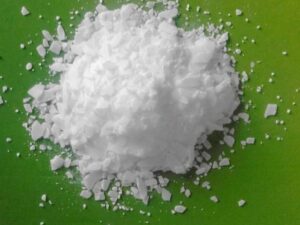Description
Ethylene: The Unseen Workhorse of the Modern World
Ethylene, a simple molecule composed of just two carbon atoms and four hydrogen atoms (C₂H₄), might not be a household name, but it’s arguably one of the most important organic chemicals in existence. Often referred to as ethene, this gaseous hydrocarbon plays a pivotal role in a vast array of industries, from agriculture and manufacturing to packaging and medicine. Its versatility stems from its unique chemical structure, making it a fundamental building block for countless everyday products.
The Building Block of Polymers:
The primary purpose of ethylene is as a key feedstock in the production of polymers, the large molecules that form the basis of plastics. Through a process called polymerization, ethylene molecules join together to create long chains, resulting in materials with vastly different properties. Some of the most common polymers derived from ethylene include:
- Polyethylene (PE): The most widely produced plastic in the world, polyethylene is used in packaging films, grocery bags, toys, and a multitude of containers. Its flexibility, durability, and low cost make it a staple in modern consumerism.
- Polyvinyl Chloride (PVC): A rigid and durable plastic, PVC is commonly used in construction materials such as pipes, window frames, and flooring. It’s also used in medical devices and clothing.
- Polystyrene (PS): This versatile polymer can be produced in various forms, including expanded polystyrene (EPS), better known as Styrofoam, used for insulation and packaging. Standard polystyrene is used in disposable cups, cutlery, and electronic housings.
- Ethylene Vinyl Acetate (EVA): A flexible and rubbery polymer used in shoe soles, foam padding, and various adhesives.
These are just a few examples, and the range of polymers that can be derived from ethylene is continually expanding, driving innovation in various sectors.
Beyond Plastics: A Versatile Chemical Intermediate:
While its role in polymer production is paramount, ethylene also serves as a crucial intermediate in the production of other vital chemicals. These include:
- Ethylene Oxide: Used to produce ethylene glycol, a key component of antifreeze and polyester fibers.
- Acetaldehyde: Used in the production of acetic acid, a common ingredient in vinegar.
- Ethanol: While ethanol is often produced from renewable sources like corn, it can also be synthesized from ethylene, finding applications in fuels, solvents, and beverages.
This diverse range of chemical derivatives highlights the versatility of ethylene and its significance in the chemical industry.
Ethylene in Agriculture: A Ripening Agent:
Beyond its industrial applications, ethylene plays a crucial role in agriculture. It acts as a natural plant hormone, influencing various developmental processes, including fruit ripening, flower wilting, and leaf abscission. Farmers often use ethylene gas to accelerate the ripening process of fruits such as bananas, tomatoes, and avocados, ensuring they reach consumers in optimal condition. This controlled ripening process is vital for extending shelf life and reducing food waste.
Challenges and the Future of Ethylene:
Despite its numerous benefits, the production and use of ethylene are associated with environmental concerns. The majority of ethylene is produced from fossil fuels, contributing to greenhouse gas emissions. Consequently, there is growing interest in developing sustainable and renewable sources of ethylene production, such as using bio-based feedstocks like biomass and waste materials.
Furthermore, tackling the issue of plastic waste is crucial. Developing biodegradable polymers and improving recycling infrastructure are essential steps towards mitigating the environmental impact of ethylene-derived plastics.
Conclusion:
Ethylene is a fundamental chemical building block that underpins a vast array of industries and plays a critical role in our modern lives. From the plastics that package our food to the fuels that power our vehicles, ethylene’s influence is undeniable. As we move towards a more sustainable future, innovation in ethylene production and waste management will be crucial to ensure that this invaluable chemical resource can continue to benefit society while minimizing its environmental footprint. The future of ethylene lies in embracing sustainable practices and developing innovative solutions to meet the growing global demand for this essential chemical.



















Reviews
There are no reviews yet.